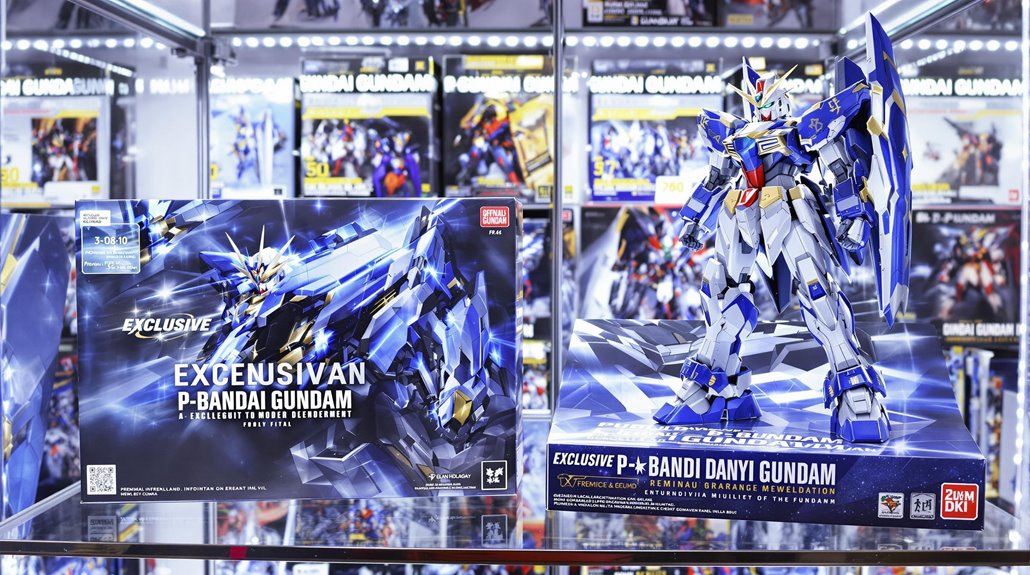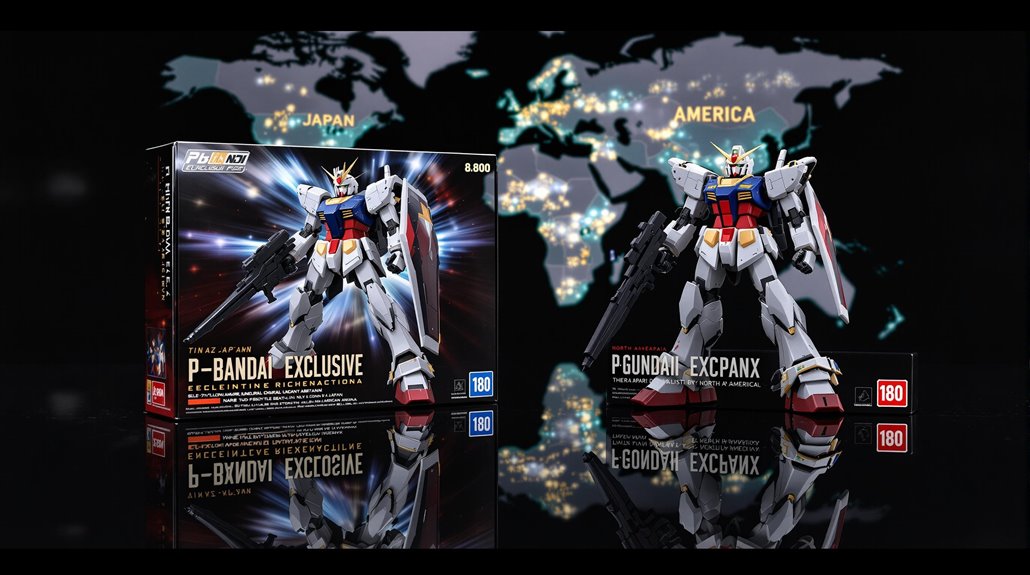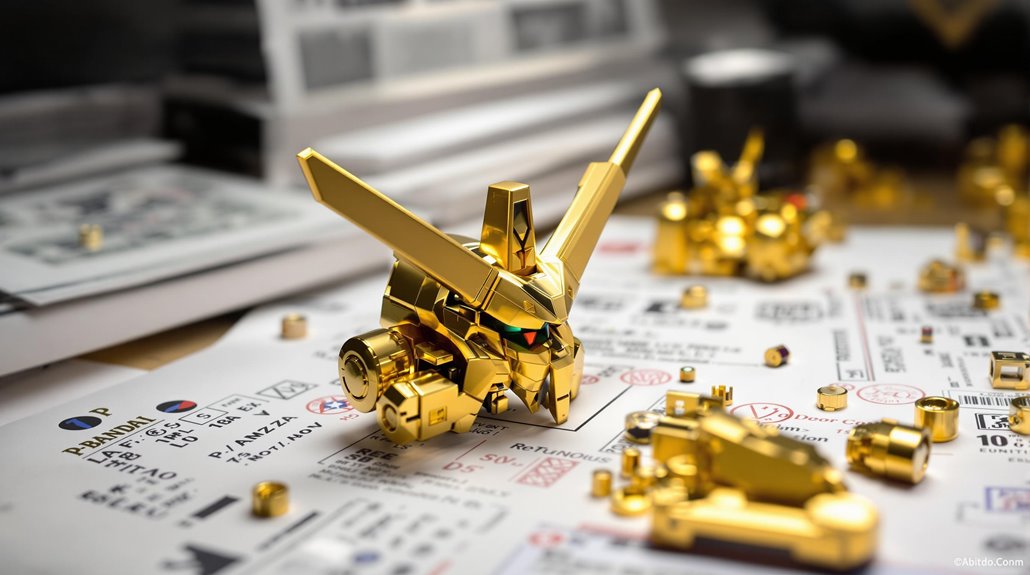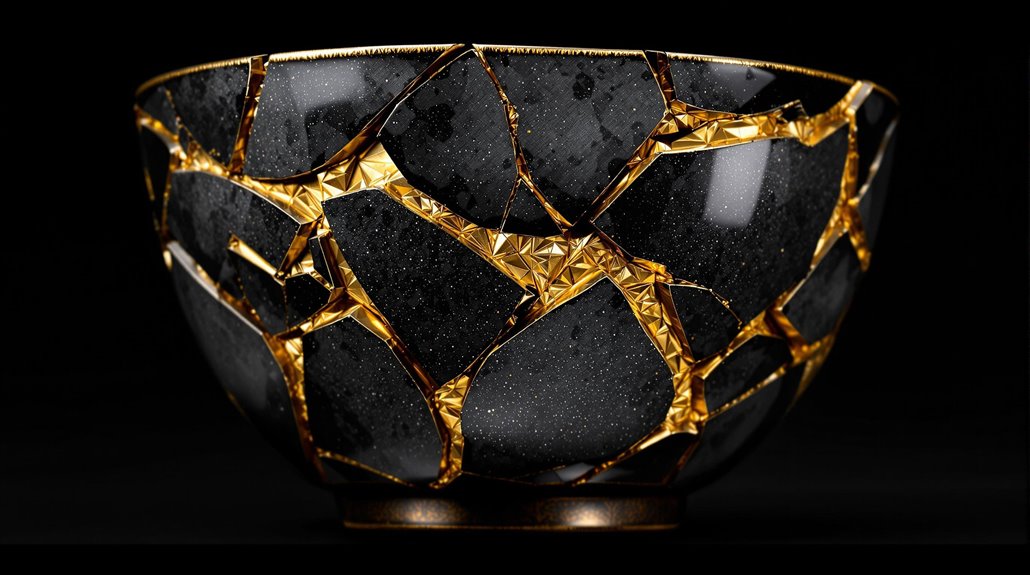Why Is P-Bandai Expensive?

P-Bandai's premium prices come from its exclusive distribution model and deliberately limited production runs. You'll find these kits are only available through Bandai's Japanese web store, with restricted quantities that don't benefit from economies of scale. The high-end materials, complex engineering, and rigorous quality control further drive up costs. Third-party resellers and import fees also inflate prices substantially. Understanding the full scope of P-Bandai's pricing reveals an intricate balance of exclusivity and manufacturing.
Understanding P-Bandai's Exclusive Distribution Model
While many Gunpla enthusiasts enjoy collecting model kits, P-Bandai's exclusive distribution model sets it apart from regular retail releases. You'll find these exclusive kits are only available through Bandai's Japanese web store, creating a deliberately limited supply chain that affects global availability.
This exclusivity allows Bandai to maintain higher prices for their kits while targeting dedicated collectors who'll pay premium rates for limited-edition products. When you order P-Bandai kits from overseas, you'll face additional costs like import duties and shipping fees, making them even more expensive.
The distribution model also means that once these kits sell out, you won't find them restocked through regular retail channels. This strategy helps Bandai avoid market competition while keeping prices heightened for these sought-after exclusive releases. Unlike standard Gundam plastic models that became widely available across Asia since the 1980s, P-Bandai maintains its strict exclusivity.
The Impact of Limited Production Runs
The limited production model behind P-Bandai releases directly influences their high price points. When you're looking at these limited edition Gunpla kits, you'll notice they're produced in much smaller quantities than standard retail releases - often just a few thousand units last year. This restricted production volume means Bandai can't benefit from the cost advantages of mass manufacturing.
The small-batch production requires Bandai to distribute their fixed manufacturing and tooling costs across fewer units, driving up the price per kit. Without the economies of scale that regular retail Gunpla enjoy, P-Bandai must charge premium prices to remain profitable. Additionally, the scarcity created by these limited runs allows Bandai to maintain higher prices, as there's no retail competition to drive costs down. The kits often feature complex builds requiring professional grade tools like hobby knives, files, and precision tweezers for optimal assembly.
Third-Party Markups and Regional Price Differences

Beyond initial P-Bandai pricing, third-party resellers drastically inflate costs for collectors worldwide. You'll often find these exclusive kits selling for two to three times their original retail price, making Premium Bandai products increasingly unaffordable for casual fans.
If you're outside of Japan, you'll face even steeper costs due to regional price variations. Japanese customers typically enjoy the lowest prices, while international collectors must contend with significant markups.
This disparity becomes more extreme with region-exclusive releases, like the 3 Kingdoms SD line available only in China and select international markets.
The limited retail availability of P-Bandai kits forces you to rely on third-party sellers, who capitalize on the scarcity by charging premium prices, further widening the gap between suggested retail and actual market costs.
With the global hobby market reaching $456 billion in revenue, these price variations and markups continue to shape collecting trends worldwide.
Premium Materials and Quality Standards
Looking past the pricing challenges, you'll find genuine value in P-Bandai's premium manufacturing standards. P-Bandai kits stand out with their exceptional build quality, featuring high-end materials like die-cast parts, metal decorations, and superior plastics that you won't typically find in standard model kits.
When you examine P-Bandai's manufacturing process, you'll notice the heightened attention to detail and stricter quality control measures. These limited-run model kits often showcase more intricate engineering and complex designs that require specialized tooling. While this thorough approach drives up production costs, it results in products that consistently meet collectors' high expectations.
The combination of premium materials and rigorous quality standards helps explain why P-Bandai kits command higher prices in the Gunpla market.
Supply Chain Complexities and Import Costs

Since P-Bandai operates through a single distribution channel in Japan, international customers face significant import-related price increases. Unlike regular kits you'll find at your local Gundam Base, P-Bandai's exclusive distribution model means you're paying for multiple layers of logistics and handling costs.
When you enable JavaScript to shop on P-Bandai's website, you'll notice prices that reflect the complex supply chain behind these limited-edition releases. Third-party resellers must account for customs duties, international shipping, and their own operating costs when bringing these kits to your region.
The small production runs make it impossible for Bandai to reduce costs through economies of scale, and each step in the distribution process adds to the final price you'll pay for these sought-after Gunpla kits.
Collector's Market Influence on Pricing
The collector's market substantially shapes P-Bandai's premium pricing strategy. When you're looking at exclusive Chief Grade kits, you'll notice their prices are driven by the basic economic principle of supply and demand.
P-Bandai's limited production runs create scarcity, which collectors are willing to pay premium prices to overcome.
You'll find that these kits often command two to three times their original retail price on secondary markets. This price inflation isn't arbitrary - it's a direct result of collectors competing for rare pieces.
The speculative nature of the collector's market further amplifies these prices, as buyers anticipate future value increases. This changeable creates a self-fulfilling cycle where P-Bandai can justify higher initial pricing, knowing that the collector's market will support and even exceed these premium rates.

